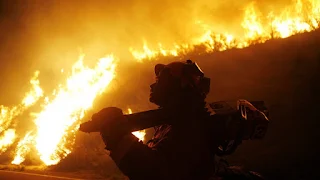The key to teaching is communication. You need to communicate clearly to your child and you need to encourage your child to explain and discuss his or her feelings when angry. There are many alternatives, here are just a few constructive possibilities:
1. Draw an angry picture, suggests that your child sit down with crayon and paper and draw picture of anger. Encourage her to be creative to show her anger in any form. If we need some guidance, suggest that she draw a picture of herself and the way she feels, or a picture of the source of our anger, over she feels like doing out of anger.
2. Roar like a lion. This may be startling to you if you are unaware that the child is angry about something, but it's better than destructive behavior.
3. Write a letter that is never sent. Encourage your child to sit down and write a letter to whom ever he is angry with. Let him write anything he wants. This approach has the added benefit of associating verbal expression with anger. Don't ask to see the child's letter; you may be the source of his anger. However, if the child volunteers his letter to you praise him for putting his anger into words.
If a child uses bad language when angered, argue the child to sit down with some paper and pencil anytime he is angry and write down all the bad words we might want to use. When he is finished suggest that he crumple up the paper and throw it away in the trash. Again, do not ask to see the list.
1. Pound on pillows. The child can went her anger my pounding on a pillow or other reason I learnt in animate object. Urge her to go at it really vigorously. This may shorten the life span of whatever you choose for. This exercise by the practice has therapeutic value for venting Angry feelings.
2. Run and play hard. It suggests that that your child release and by using physical exercise as an outlet almost anything that requires a great deal of effort will do the trick suggest running all out or throwing a ball against the wall as hard as possible and then chase it or you could argue the child to go outside and try to push the house over.
3. The point of all this is to attempt to find something that enables a child to dissipate his or her anger. If one choice doesn't seem to work, you can suggest another there are times when a child will say something hurtful to you while learning to handle anger constructively. Remember that children and adults all say things in anger that they really don't mean. Tell your child that you feel hurt the child will learn that just doesn't. Others words can affect him his words can affect another.
Later with everyone's nerves are less in flame and ask your child if his words were an accurate expression of his feelings. Discuss the situation openly and honestly that encourage him to vent his anger and other feelings positively in the future.
Master piece from the book : 'Teach your child that it's OK to be Angry.'





